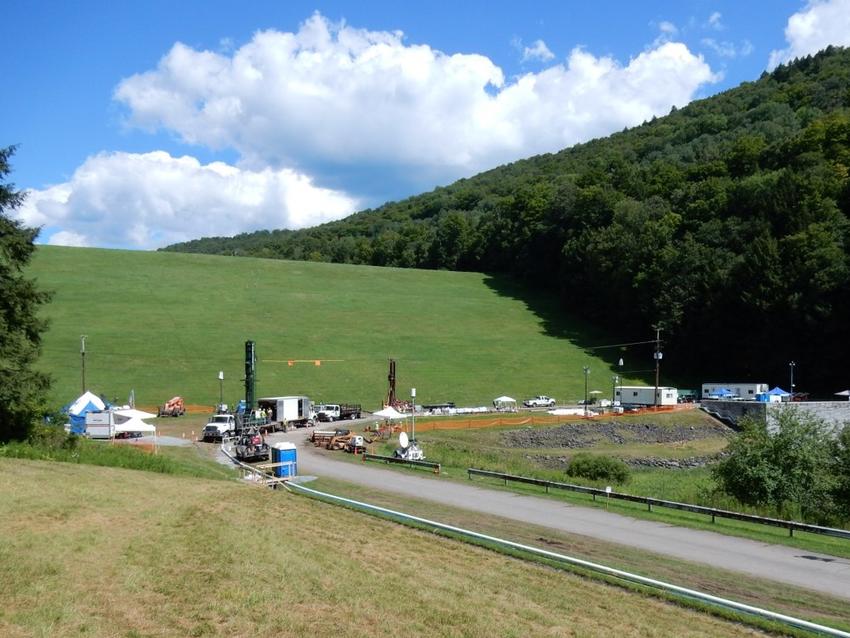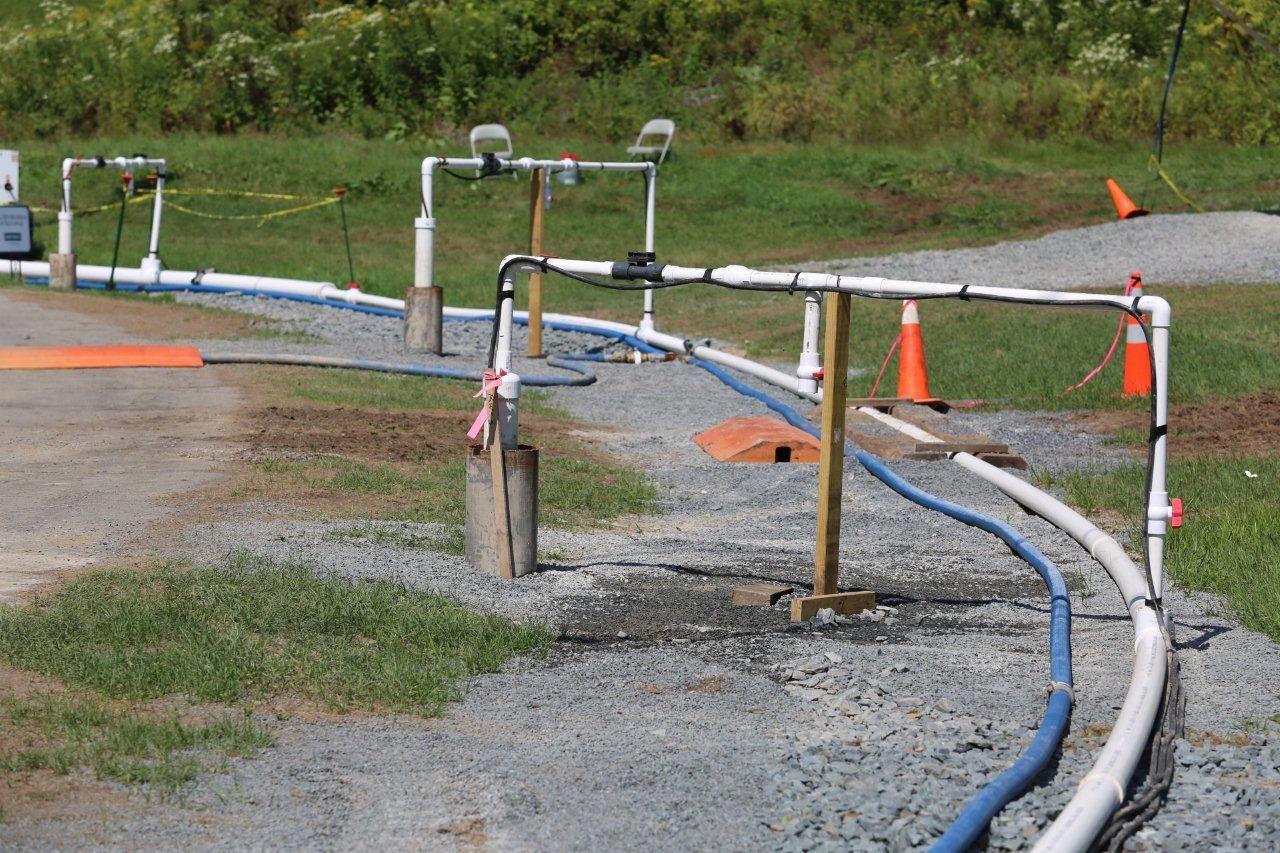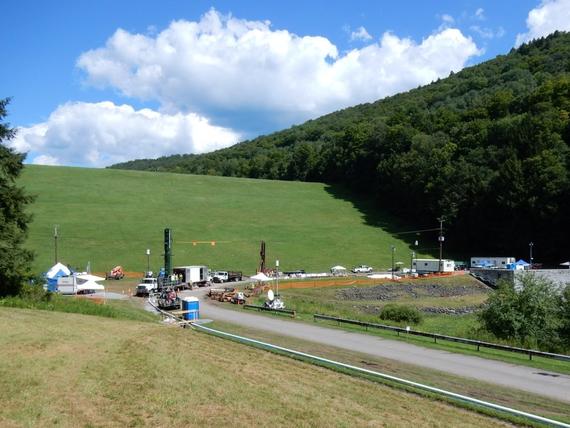Keller’s rapid response to developing and implementing an emergency groundwater control plan was key to quickly resolving a subsurface issue threatening dam stability.

The project
Cannonsville Dam is located on the West Branch of the Delaware River and impounds a reservoir used for water supply and recreation. Built between 1959 and 1964, this earthen dam has an impervious central and upstream core zone keyed into the glacial till foundation, a semi-pervious downstream embankment zone, and a rockfill toe. It is approximately 2,800 ft (853.4 m) long and 175 ft (53.3 m) high. The reservoir holds 95.7 billion gallons at full capacity.
The challenge
The drilling of three exploratory boreholes in preparation for constructing a hydroelectric plant at the downstream toe area of the dam facility caused an artesian water release from an underlying permeable silty sand and gravel formation. This resulted in a turbid/muddy discharge in the tailwater, an indicator of piping (internal erosion) that could lead to dam failure if left untreated. Work was halted immediately, followed by intense 24-hour monitoring and reservoir draw down at a rate of a billion gallons per day. The owner sought input from the geotechnical community to design and develop an emergency remediation plan.
The solution
Keller developed and implemented a pressure relief deep well system to lower the hydrostatic head upstream of the three boreholes. This was followed by a grouting program to permanently seal off the artesian aquifer at the three boreholes. Mobilization to the site and initiation of well construction was accomplished within three days of notice to proceed. Seven wells were installed using the sonic drilling method due to its ability to install a relatively large diameter casing through rockfill quickly and with little or no water or air flushing, which could exacerbate the situation. Low mobility grouting (LMG) was used to displace and densify the soil within the borehole closure zones, effectively sealing not just the boreholes but also filling any potential voids and tightening loosened ground in the affected area.
Following close observations throughout well installation/pumping and drilling/grouting activities, careful evaluation of the ground conditions, and verification of instrument readings, the project team deemed the remediation program successful. The wells were deactivated, and the reservoir was restored to normal operations.

